In my previous post on the negative review by BYU professor Chris Rogers regarding Brian Stubbs’ work on ancient connections between Uto-Aztecan languages and three Old World languages, some comments point to Rogers’ Table 6 as key evidence for dismissing the correspondences detailed by Stubbs. Table 6 appears to present evidence that chance similarities could account for what Stubbs has found.
As a reminder, the key to establishing genuine connections between ancient languages is not finding a bunch of random words that can appear to be related, but establishing meaningful relationship with many examples of consistent sound changes. Here is an excerpt from Wikipedia’s article on the “Comparative Method” describing how to establish legitimate connections:
Step 2, establish correspondence sets
The
next step involves determining the regular sound-correspondences
exhibited by the lists of potential cognates. For example, in the
Polynesian data above, it is apparent that words that contain t in most of the languages listed have cognates in Hawaiian with k
in the same position. This is visible in multiple cognate sets: the
words glossed as ‘one’, ‘three’, ‘man’, and ‘taboo’ all show this
relationship. This situation is termed a regular correspondence between k in Hawaiian and t in the other Polynesian languages. Similarly, in those data a regular correspondence can be seen between Hawaiian and Rapanui h, Tongan and Samoan f, Maori ɸ, and Rarotongan ʔ.Mere phonetic similarity, as between English day and Latin dies (both with the same meaning), has no probative value.[31] English initial d- does not regularly match Latin d-[32]—it is not possible to assemble a large set of English and Latin non-borrowed cognates such that English d repeatedly and consistently corresponds to Latin d
at the beginning of a word—and whatever sporadic matches can be
observed are due either to chance (as in the above example) or to borrowing (for example, Latin diabolus and English devil—both ultimately of Greek origin[33]). English and Latin do exhibit a regular correspondence of t- : d-[32] (where the notation “A : B” means “A corresponds to B”); for example,[34]
English ten two tow tongue tooth Latin decem duo dūco dingua dent- If there are many regular correspondence sets of this kind (the more
the better), then a common origin becomes a virtual certainty,
particularly if some of the correspondences are non-trivial or unusual.[21]
This is at the heart of what Stubbs has done, presenting extensive data on widespread, consistent sound changes that link cognates between Uto-Aztecan languages and three Old World languages (that happen to have Book of Mormon ties). Many are non-trivial, detailed, involve lengthy words and sometimes surprising parallels in meanings and multiple meanings. But Rogers seems to treat this work as amateur excitement over chance parallels.
Suppose, for example, that the German had gone completely extinct a couple hundred years ago and only now had scholars recovered and deciphered a handful of texts. Suppose you are working on the language and begin to notice parallels with English, such as “das Buch” = book, “kochen” = to cook, and “suchen” = to seek. These show a consistent relationship between German “ch” and English “k,” which is far more meaningful than if book, cook, and seek seemed to align with, say, “ubakr,” “kouki,” and “zeqqol.” With chance finds, of course, it is unlikely that consistent patterns will arise. So even if your list of cognates was still small, the pattern of sound changes could help you realize that perhaps more than chance was at play.
But chance is always a possibility. In fact, false cognates due to chance can be found without too much trouble. In Chinese, “fei” can mean “fee,” but there’s no evidence that any legitimate relationship is behind this and many other chance parallels. How often can chance lead to a false cognate? Stubbs suggests it is 1% to 3% of the time. OK, but I think it would be very hard to contrive English-Chinese parallels for 1% of either language. But accepting that range, Rogers crunches some numbers to suggest that the 1500+ cognates presented by Stubbs are meaningless. To do this, he considers that the Uto-Aztecan language family has 30 languages and that Stubbs is scanning 3 Old World languages, which greatly increases the potential for finding parallels. Rogers argues that at a 3% rate of chance cognates, we might expect nearly 5,000 chance parallels, making 1,500 completely pathetic. Here’s the relevant portion of his paper from pages 255-256 (click to enlarge):
There’s clearly something wrong when he reports that 2,598 similarities are expected by chance alone, for that number is the number with a minus sign (i.e., 2,598 less than zero) is the number Table 6 shows remaining after subtracting the actual calculated number of possible false cognates, 4,126, from the number of cognates presented by Stubbs, 1,528. But much more trouble is occurring here than just reporting the wrong sum. This number of over 4,000 false cognates is based on rather spurious math, IMO.
The first additional problem is that Rogers is using the wrong base in calculating potential false cognates. He treats 1,528 as that base, but the base should be the number of words in the language family being considered, which is an even bigger number. But let’s assume that Rogers math is correct and that there’s a base of only 1,528 Uto-Aztecan words, incorrectly implying that Stubbs is proposing that 100% of the UA vocabulary is related to Egyptian and Semitic. Even in that case, Rogers obliterates any cause for excitement by multiplying the upper limit of 3% chance of a random correspondence by 30 Uto-Aztecan languages and by 3 Old World languages, in other words, 0.03 * 30 * 3 = 2.70, giving 270% of the entire vocabulary being subject to false cognates with Stubb’s 3 Old World languages by chance. That’s how 1,528 cognates from Stubbs becomes a potential 4,126 false cognates in the crazy math of Table 6. Something is out of touch with reality here.
Part of the problem here is that the 30 languages of Uto-Aztecan are all related, and that Stubbs is not creating an additional entry and claim for each related cognate in each language. Worse than double jeopardy, Rogers would give a false cognate a penalty of 30 * 3 = 90 words to deduct from Stubbs’ list. Note that almost each of the 1500+ cognates from Stubbs involve multiple languages and usually involve reconstructed Proto-Uto-Aztecan words; he’s not counting a cognate as, say, 15 cognates when half of Uto-Aztecan languages seem to share it, but lists it as one entry.
Further, great weight should be given to cognates that involve Proto-Uto-Aztecan, which would naturally tend to involve multiple modern UA languages. Rogers should consider the high number of cognates that are related to Proto-Uto-Aztecan, where it makes even less sense to conjure up huge numbers of expected false cognates with the multiply-by-30 tactic.
To get a feel for what Stubbs is reporting and how he counts multiple related hits in multiple languages, below is a randomly selected section from Stubbs’ more technical book (I scrolled to a random place and then picked a contiguous section that included discussion of the sound change rule under consideration), where you can see for yourself. Many of those two- and three-letter abbreviations in his explanations are abbreviations referring to specific languages, and UACV followed by a word with a leading asterisk refers to a reconstructed Proto-Uto-Aztecan word from his definitive publication on the language, which is used in each of these entries and I believe the majority throughout the book. Here’s the excerpt from pages 80-81 of Exploring the Explanatory Power of Semitic and Egyptian in Uto-Aztecan, which can be downloaded at BMSLR.org for free, courtesy of Jerry Grover (click to enlarge):
Sadly, even some highly educated people have jumped on Table 6 and feel that Rogers with his reported gargantuan numbers for expected false cognates (up to 270% of the vocabulary) has provided compelling reasons to dismiss Stubbs’ work as meaningless garbage all due to chance alone. You can always find a reason to dismiss something you don’t like, but relying on preconceived notions coupled with bad math is not the most accurate way to reinforce your views. These kind of math errors are easy to make, I’ll admit, but it’s unfortunate that they survived peer review for the Maxwell Institute’s publication. What Stubbs gives us requires more thoughtful attention that this. Yes, it’s counter to so much that we think we know so it’s easy to want to dismiss it, but the data is not readily explained by chance cognates, and the patterns of consistent sound changes add a great deal that Rogers is missing. I hope Rogers will give Stubbs a closer look! I think he missed some significant aspects of the work he criticizes. Hoping for a round 2!
I also have to point out that Rogers’ comment on pp. 255-256 about not accounting for the impact of borrowing is quite puzzling. Stubbs is arguing that there was an infusion of ancient languages, not a genetic relationship. Read Stubbs’ response on my previous post to get into that issue more fully. But for today, I’m just addressing the issue of Table 6 and its faulty math.

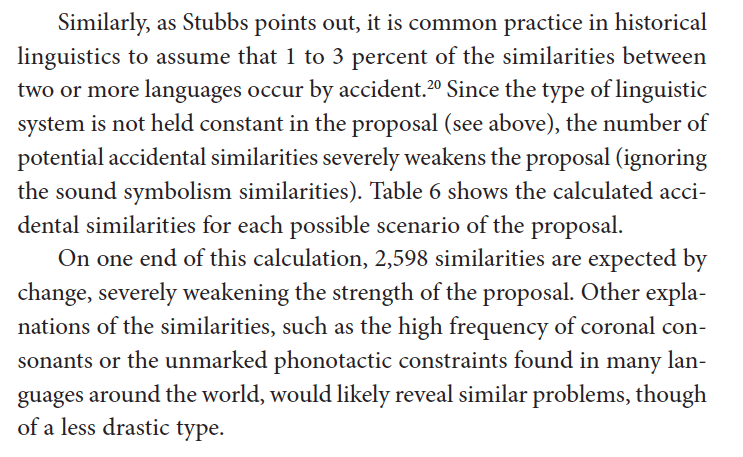
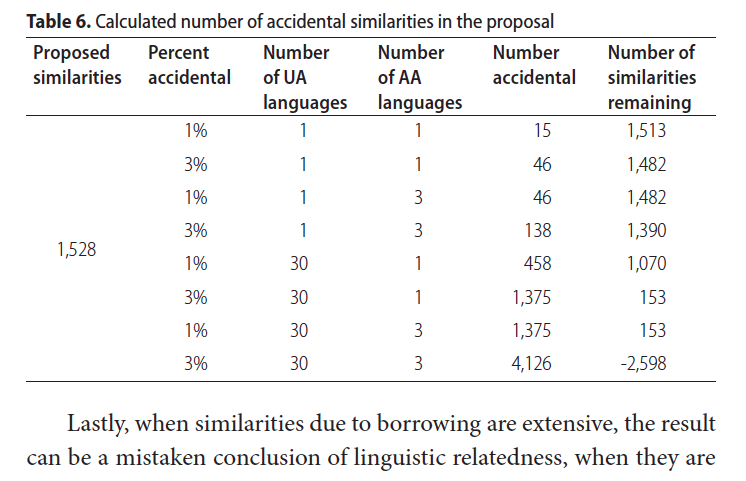
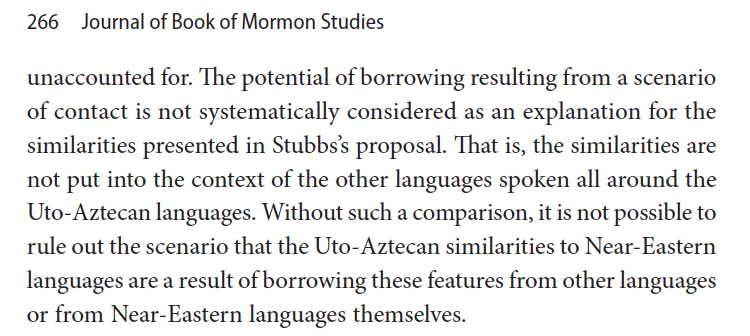
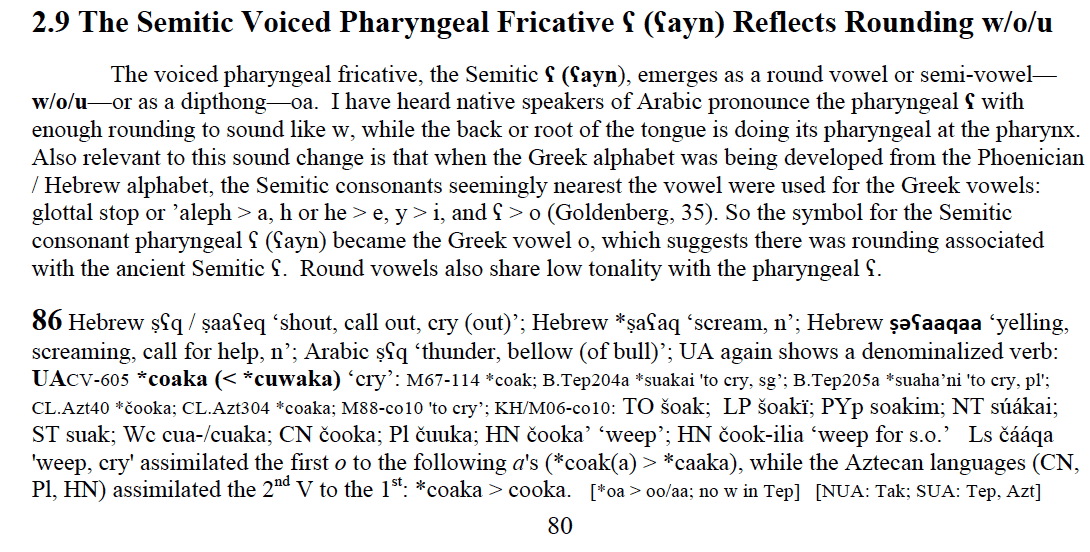
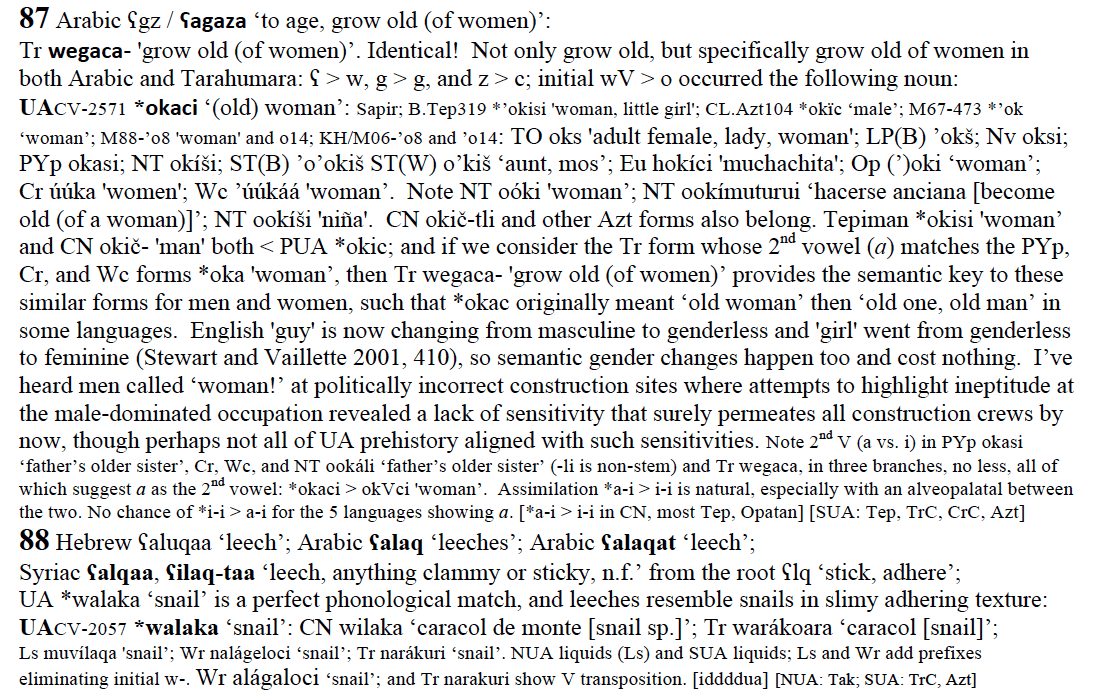
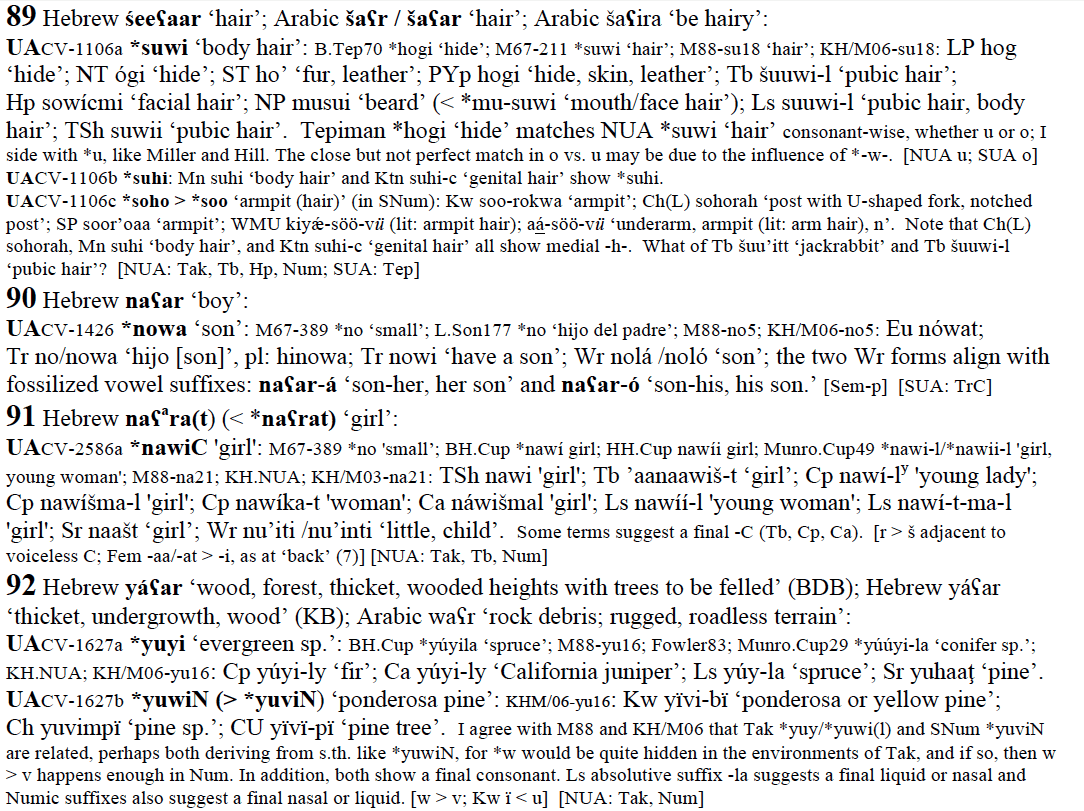
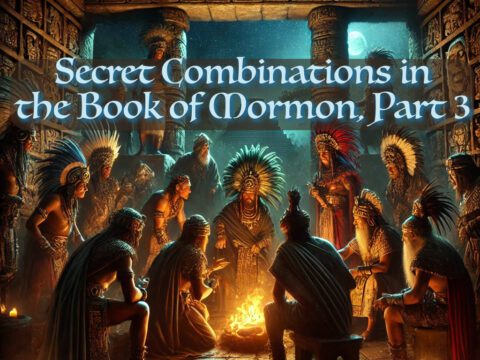


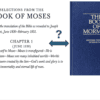
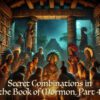
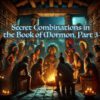
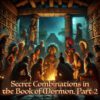
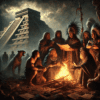

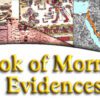
Golly gee, Jeff, it sure looks like Stubbs’s work is so solid, and the criticisms so lame, that it should have no trouble at all with independent peer review.
Such an exciting discovery he’s made! He’s revolutionized our understanding not only of New World linguistics, but also New World archaeology, history, genetics….
It must all be re-thought in light of this amazing discovery!
Academia must be alerted immediately!
So why is this amazing discovery being held so close to the vest? Why not share it with the world? Why keep it cloistered?
Seriously, Jeff, without genuine peer review, you’ve got nothing. The continued avoidance is extremely telling.
— OK
What reasons might someone give for wishing the Book of Mormon to be inauthentic?
The wish is that people who claim to follow the truth could actually SEE the truth that the BOM is a big fat fairy tale promoted by people touting the most arcane and tortured logic possible and avoiding any legitimate test of its premises.
Anonymous,
I am assuming you meant to answer my question.
Is "I wish for the Book of Mormon to be inauthentic because the Book of Mormon is inauthentic" a fair rephrasing of your answer to the question "What reasons might someone give for wishing the Book of Mormon to be inauthentic?"
Jared,
There is no wishing involved. I think most are simply trying to point out that the emperor has no clothes.
Jeff and others, don't worry about OK's biased and bone-headed responses.
Brian Stubbs has sent his 2015 book out for peer review, and some didn't respond to him, but some did, and did so favorably:
After 35 years of research, I published Exploring the Explanatory Power of Semitic and Egyptian in Uto-Aztecan (2015b), which linguistically establishes a Northwest Semitic (Hebrew/Aramaic) and an Egyptian infusion, language mix, or massive borrowing into UA. Though skepticism was always the initial reaction, those who actually examined the data, among both LDS and non-LDS linguists, Uto-Aztecanists, and Semitists, offered favorable assessments or silence.
This is solid, important work. But no matter what the quality of work, when it impinges on things that academia is uncomfortable with, academia largely ignores it. That's the way it goes.
Anonymous,
If you do not agree that someone can possibly have reasons for wishing the Book of Mormon to be inauthentic, you need not respond to my question.
For anyone else – what reasons might someone give for wishing the Book of Mormon to be inauthentic?
OK,
Your comments come across as sounding like an elementary school yard bully. You've posited lots of hypotheses over the years but I have yet to see any peer reviewed scholarly articles that support your claims. You want all of us to take your comments
Steve
Jared,
Your question is inadequately framed as it assumes that the BoM is "authentic," and that any thought contrary is merely a "wish." There are those who know that the BoM is "inauthentic," and have multiple evidences that demonstrate it. Why would someone "wish" it were authentic?
This comment has been removed by the author.
Anonymous,
My question only assumes the BoM may be authentic. It may be false indeed, but so long as its falseness is not demonstrated – either by direct, firsthand experience or by proof by contradiction with direct, firsthand experience – its falsehood is only wished for.
Let us examine the Book of Mormon, treating its sentences as propositions. Which specific proposition, or set of propositions, from the text of the Book of Mormon have those falsified who "know" – know by direct firsthand experience – that the Book of Mormon is inauthentic, and how, exactly, was their falsity demonstrated?
Please bear in mind that the Book of Mormon makes no unambiguous internal claim to any known location for its narrative events other than, for the most part, "not Jerusalem," and "not the Tower of Babel." In particular, the Book of Mormon does not seem to make any unambiguous claims that necessitate an ancient American setting.
So, please tell me by what direct firsthand experience those who know the Book of Mormon is inauthentic came to the knowledge of its inauthenticity.
What constitutes “direct firsthand experience” to you? When I read it I have the direct firsthand experience of reading a 19th century text. That tells me that it is inauthentic in that it is not what it claims to be.
Do you have “direct firsthand experience” of its authenticity?
Sigh … Jared all you have stated is you don't know what it means for the bom to b authentic, which is telling. As you demonstrate, the nephite lands appear to be ever disappearing, which is not a characteristic of authentic things.
Jared –
"It may be false indeed, but so long as its falseness is not demonstrated"
Instead of listing all the ways you believe it cannot be determined to be nauthentic why not describe what you had it mind about how it's falseness could be demonstrated?
Anonymous,
I hereby relinquish my request to you for you to substantiate your claim that someone, somewhere, both knows the Book of Mormon is inauthentic and has multiple evidences to demonstrate its inauthenticity.
Does anyone else have an answer as to what reasons someone might give for wishing the Book of Mormon to be inauthentic?
Haha, you see how bogus you are being. You failed to produce a single item that if so, indicates falseness, despite previously claiming it could be possible. Therefore it can not be indicated to be "authentic" either, as you once claimed. So, as the Anon try to help you, your question is loaded, it is not others that wish it to be inauthentic, it is you doing the wishing. Running away from people pointing this fact out to you and seeking imaginary validation.
Jared Livesey @ 6:55
Fawn Brodie once admitted to Dale Morgan that, after leaving the Church, she had a psychological need to distance herself from Joseph Smith. She ended up meeting that need by writing No Man Knows My History and declaring all out war. Sounds like a reason for someone to want the Book of Mormon to be inauthentic.
Jared that's got to be the stupidest question I've ever heard in my entire life. You should be ashamed of yourself for being so manipulative and fallacious. Do you think you're clever? Do you think you control this conversation? You're not and you don't. Stop thinking you have any sort of upper hand. You're on the losing team.
There's no wishing involved in any of this. Only truth. Truth will out. The truth is already been out and it has been for a long time. The fruits of this truth are all around you. People are leaving your church in droves. 2 more families in my Utah stronghold ward this summer.
Keep asking stupid questions, but be sure to look up once in a while. You'll notice the crowd is thinning.
No one likes being lied to. No one likes being manipulated. No one likes being gas lit.
Hoosier,
That sounds like an emotionally sufficient reason indeed.
Direct, firsthand experience is actual sensory experience – seeing, hearing, or touching, for example. Direct, firsthand experience is knowledge, and nothing else is; you know something if, and only if, you are experiencing it – this is definitional. The purpose of this definition is to exclude from that which is called "knowledge" anything which can possibly be false – hence, properly speaking, one only knows what one is presently experiencing, as memory could potentially be faulty.
It follows that for humans of normal lifespan and sensory capacity that things happening outside of their senses – howsoever defined – cannot be known by definition. Thus unless it is by revelation, which is experienced, no man knows the Book of Mormon to be inauthentic; likewise, no man without revelation knows it to be authentic. And if revelations do not occur, no knowledge about the authenticity of the Book of Mormon – or knowledge about anything outside of our normal sensory operations – is possible. It follows also that knowledge is nontransferrable between humans. All that is available outside of knowledge is superstition, heresay, reports of knowledge, lies, inferences, potentially flawed memories, and the like.
“that things happening outside of their senses – howsoever defined – cannot be known by definition. Thus unless it is by revelation, which is experienced, no man knows the Book of Mormon to be inauthentic;”
Jared,
Your reasoning is again problematic. You’re implying that the only way one can quantify an external phenomenon is by means of an internal, non-quantifiable phenomenon. Trusting in revelation to provide accurate, reliable information has been proven historically to be extremely foolhardy. Your likelihood of being correct would be better if you tossed a coin.
This comment has been removed by a blog administrator.
Hoosier 8:40 –
Circular reasoning: "she had a psychological need to distance herself from Joseph Smith" (no reference given) Why did she have a need to distance herself from Joseph Smith? Therefore, all you have done is repeated Jared's manipulative, fallacious reasoning.
Why do the two of you wish the Koran to be inauthentic. Asked a 100 times, but never answered.
Jared –
"All that is available outside of knowledge is superstition, heresay, reports of knowledge, lies, inferences, potentially flawed memories, and the like."
Given that you have no knowledge of what it is you mean by "authentic" all you have is superstition, heresay, lies, inference, flawed memories and the like. As anon 3:28 pointed out, we do indeed have strong evidence that you are not asking a question, but fulfilling a strong psychological need to declare those with knowledge that differs from your belief liars. The way you ran away above (6:55) shows you know you are wrong and are in serious need of psychological help.
Jared – your inability to describe what you mean by authentic proves you are only resorting to semantics to ease your own personal frustrations, which frustrations may be why you wish things to be the way you wish them. Your supposed question answered.
OK, I understand that peer review is in the works in some way — these things take time. But you should know that Stubbs has widely disseminated his work to pretty much all the experts in UA asking for feedback. But in Rogers' peer review process shown in the article in question, we see some of the unfortunate limitations of peer review when one is clearly departing from the "common knowledge" of the field. The problem is introducing advances that cause reflex reactions due to defying old paradigms is that peer review will often not be real review at all, nor thoughtful consideration of the evidence, but a reflex assertion that the work must be completely fallacious, as I think we have beautifully illustrated here. How could Rogers make such glaring mistakes, while being a very smart guy, unless it's just the old story of thinking one knows and defending the common knowledge of the field without giving a fair short to the work. Stubbs knows he has been up against this and yes, it has been difficult, but he's definitely trying, so be patient.
Peer review was very much the problem that kept the cause and cure for scurvy away from the very intelligent British medical establishment for about two centuries while thousands of men continued to die unnecessarily. Everyone knew, back then, that scurvy had nothing to do with diet, and had already been explained based on Aristotle's theories as due to bad vapors or something equally mysterious. Experimental evidence regarding limes were dismissed as ridiculous, crackpot stuff.
Peer review held back advances in basic sanitation in hospitals, resulting in thousands of needless deaths while Semmelweis went crazy trying to get people to cleanse their hands to stop spreading germs and killing their patients. Nope, didn't fit the established science and was rejected for way too long. It may take many tries before we can get the extensive evidence from Stubbs to be considered by intellectuals who really don't want to look at such a crackpot idea. Even you, OK, were so quick to bury Stubbs work based on the numbers from Table 6 without being able to see what deeply messed up math was at work. Confirmation bias is hard to shake off, and opening eyes to completely new paradigms is never easy.
But I share your desire to see this go through further thoughtful peer review and finally be formally published in a solid journal. I believe this will happen, so be patient. But until then, we have much more than nothing. That added recognition will be nice but not essential for intelligent people to consider and debate what Stubbs has published.
"intelligent people" probably prioritize what they will "consider and debate" better …. No wait, on second thought there are intelligent people religiously declaring global warming a bigger existential threat than nuclear weapons , poverty, war, biological outbreaks … May be while people are dying of these actual problems we should have a religious discussion to debate and consider what it means to be an intelligent person.
Holy cow, all this time peer review was the real enemy! The murderer was calling from inside the house, to put it colloquially.
Way to poison the well, Jeff. When this supposed peer review finally happens, if it ever does, you've propped up an excuse just in case it's less than glowing. Ridiculous.
Stubbs: I have made an astounding discovery that revolutionizes several academic fields!
OK: Um, I think there might be some problems with your methodology. We need peer-review.
Steve: It is not Stubbs's work that needs to be peer-reviewed, it is OK's call for peer review that needs to be peer-reviewed.
Usually you're more sensible than this, Steve.
— OK
Jeff, you write, Peer review was very much the problem that kept the cause and cure for scurvy away from the very intelligent British medical establishment for about two centuries while thousands of men continued to die unnecessarily.
This is called "blowing smoke."
Then you write, But I share your desire to see this go through further thoughtful peer review.
Wait, what? What about all those poor, scurvy-ridden British sailors? Seriously, if you agree with me that Stubbs's work should be peer-reviewed, why the clumsy, anachronistic effort to discredit peer review?
You ask, How could Rogers make such glaring mistakes, while being a very smart guy…? I would blame any mistakes (if they are such–you're assuming the facts under dispute) on a lack of peer review. Book reviews are themselves generally not peer-reviewed, nor do book reviews constitute peer review. In fact, instead of assigning book reviews to top scholars in a field, journal editors generally farm them out to advanced grad students and junior faculty like Rogers. (And FWIW, outside of Provo, BYU Studies is not considered a "solid" academic journal.)
Perhaps most crucially here, Jeff, you say that Stubbs has widely disseminated his work to pretty much all the experts in UA asking for feedback.
So what you're saying is that "pretty much all the experts in UA" have been exposed to an amazing discovery that completely revolutionizes their field. And yet, several years after having their professional world rocked to its foundations by the knowledge that UA was significantly shaped by a hitherto completely unsuspected infusion of Semitic, all those experts are proceeding as if that discovery had never been made.
How can we explain this curious indifference? How can Stubbs's work be both so revolutionary and so sound, and recognized by his peers as sound, without in the least influencing their work? The most obvious answer here is that those peers do not believe his work to be sound.
If these experts found Stubbs's work sound, would they not be proceeding differently than they are? If they found Stubbs credible, wouldn't his discovery be shaping contemporary UA research? Remember, Stubbs's claim is not that he's showed them his work and they've rejected it (as the early British medical establishment rejected basic sanitation). His claim is that they've seen his work and told him it's sound.
And yet these experts are not factoring this profound Semitic influence into their own work. How very odd!
My guess is that these experts have not found Stubb's work credible. My guess is that they would not have expressed their rejection to him directly. Out of respect and affection for an old and otherwise competent colleague., they would have praised what they found praiseworthy in his work, been silent about the rest, and then gone on about their own work exactly as before.
But at least you agree with me about the desirability of "thoughtful peer review." Hasten the day.
— OK
Oops–in my reply above I meant the Journal of Book of Mormon Studies, not BYU Studies.
— OK
OK is providing us with a good reminder. Much like a prophet is only a prophet when he's speaking as a prophet, PhD's are only PhD's when they are working within the rigors of the academy. If you are producing work using the trappings of your training, it is merely entertainment unless it has been analyzed, scrutinized and publicly addressed by peers.
Jared / Hoosier – Some links to help answer your question about why you behave the way you do.
"It's about avoiding the stress of unlearning, the possibility of regret or the shame of having been wrong. And so, in the interest of cognitive harmony,"
https://science.howstuffworks.com/science-vs-myth/everyday-myths/why-people-believe-things-science-proved-untrue3.htm
https://www.scientificamerican.com/article/how-to-convince-someone-when-facts-fail/
https://files.eric.ed.gov/fulltext/EJ854880.pdf
Jared,
An angel came and took the plates back from Joseph Smith. An angel! He carried those plates, which were made out of earthy matter, into the heavenly realm with him so that we could not have them here on earth with us as we evaluate the authenticity of the Book of Mormon. And that is why they are not here today. And you want to really have a conversation about the authenticity of the Book of Mormon?
EBU
EBU, you make the story of the plates almost sound as if God wants us to have to exercise faith rather than rely on simple absolute proofs that require no searching and no growth from the believer. Yeah, pretty crazy, I know!
OK et al., my comments on peer review were not meant to blame it, but to point out its well known limitations in the unusual case of a breakthrough that topples long-cherished paradigms. See Thomas Kuhn’s The Structure of Scientific Revolutions. I definitely want peer review, but recognize that the odds may be against success even if Stubbs work were flawless just because it is automatically so contrary to what everyone believes is common sense.
Jeff, Kuhn has nothing to do with this question. Stubbs is actually working within the existing paradigm, or perhaps more accurately, the notion of immigration leaving a detectable linguistic trace is not outside the existing paradigm. If Stubbs is right, it will radically change the way we think of ancient American history, linguistics, archaeology, etc., but it will not change the basic procedures and methodologies of those disciplines. It just doesn’t rise to the level of a paradigm shift; rather, Stubbs is accumulating facts, doing “normal science,” within the existing paradigm of comparative linguistics.
Be that as it may, I’m glad to hear you sincerely favor independent peer review of apologetical research. Perhaps someday you’ll even find yourself moved to openly criticize apologists for ducking it.
— OK
Anon 12:37 AM –
"Earning the ridiculous Mormon idea of polygamy heaven? " That sounds pretty cool to me. You don't want that?
But I think that is your point, isn't it? Wishing something to be true because the stress of it not being true is greater than the stress it is, is wishful thinking not faith. Faith is having a personal relationship with God, not artifices.
Jeff claims that consecrated olive oil, masonic clothing, the Eucharist, etc do not actually have magical powers and he claims that transparent and jasper like peebles dug out one's backyard do not actually translate dead and unknown languages. Given Jeff claims these things, why does he need to falsely make his personal beliefs in the historicity of the BoM official LDS doctrine? To be baptized Mormon there is zero requirement to believe the BoM is anything more than an allegory. Faith in the allegory's message is all that is required.
If Jeff could ever just let his go of his ego and arrogance, abandon his desire for mind control and power over others, then he could finally surrender to the will of God and come closer to Christ and truly strive to be more like the anointed one.
Jeff – You make the story of New World Wandering Israelites sound as if God is involved in massive conspiracies and deception, doesn't want harmony between faith and reason, wants us to believe allegories actually exist in some sort of alternate universe that operates differently than ours, and wants us to vainly distract ourselves crusading for some sort of imaginary holy grail or lost ark. Pretty crazy and medieval compared to the God I know!
"We claim the privilege of worshiping Almighty God according to the dictates of our own conscience, and allow all men the same privilege, let them worship how, where, or what they may."
Jeff 11:17 – You are sarcastically suggesting that there are many, common examples of God himself deliberately obfuscating the provenance of canon. The second set of commandment tablets were displayed to the Israelites and stored in the ark, but no attempt by God Himself to deliberately hide them in order to demand faith in their existence. Are you going to provide examples that demonstrate God's supposed deliberate hiding of the plates is frequented with analogous Biblical examples?
Anon 7:35, you make an excellent point.
On the one hand, says Jeff, “God wants us to have to exercise faith rather than rely on simple absolute proofs.”
On the other hand, LDS apologetics is one long effort to discover exactly the kind of “absolute proofs” that would make it possible to believe without relying on faith.
Also, of course, if God’s intent in fetching the gold plates up into some celestial archive was to compel us to rely on faith, it’s hard to see why the Book of Mormon would be prefaced by the statements of the witnesses.
In a courtroom, the jury is not supposed to rely on faith, which is why attorneys submit evidence and call witnesses to testify.
— OK
OK, I honestly can't tell if you're trying to tear down the Book of Mormon Witnesses or build them up.
And I don't think your description of LDS apologetics is accurate. I think it's more of, "is there anything that suggests we're on the right track, so our faith isn't completely blind?" combined with a search for answers to critical questions, accusations, and "gotchas."
Ramer says, OK, I honestly can't tell if you're trying to tear down the Book of Mormon Witnesses or build them up.
Neither, actually. I’m saying that, had the Church’s founders thought that belief in the Book of Mormon’s divinity must be based on faith, they wouldn’t have prefaced it with witness testimony, i.e., rational evidence for believing, at all. But they did provide such evidence, ergo they did not think belief should be based on faith. In fact I think Jeff is just giving us an ad hoc rationale for the absence of the plates when the most obvious explanation is that they never existed at all — no more than any of the other treasures Joseph Smith bragged about during his career as a gold-digger.
As for my my “description of LDS apologetics,” you’re right that some of it consists of attempts to rebut the skeptics’ arguments. But much of it, like Stubbs’s and Carmack’s work (and a lot of the amateurish “Book of Mormon archaeology,” literary analysis of chiasms, etc. that preceded it), is intended to provide direct material evidence for belief.
Maybe this disagreement turns on the distinction between “faith in the absence of confirming evidence” and “faith in spite of disconfirming evidence.” Maybe. But for our purposes here, that distinction might not matter. If God values faith in the absence of evidence (and for that reason he spirited away the gold plates), would he not value faith in spite of the evidence even more?
— OK
Ramer –
So you, like Jeff, have no analogous example from the Judeo-Christian tradition.
Usually faith is required to believe the authors of canonized scripture were more than simply enlightened. Though skeptics challenge the document record, not even they dispute the writings are ancient. Judeo-Christian followers do not usually blame God Himself for the challenges to the document record.
But here with the BoM, Mormons have God demanding faith not only that the supposed authors were inspired, but He demands faith that the authors and scriptures were ancient, then God Himself deliberately sullies the chain of custody to make faith more difficult. This is radical departure from traditional concepts, yet Jeff is sarcastically suggesting to EBU that this normal.
But much of it, like Stubbs’s and Carmack’s work … is intended to provide direct material evidence for belief.
This is why I said apologetics is looking for things that suggest our beliefs are on the right path, rather than direct proof. If it was really "direct proof," then everyone seeing it would be convinced of its truthfulness. Your comments, as well as the above anon's (is that you Mormography?) attempt to drag me into a conversation I'm not a part of, show that the results of their apologetics are not, nor were they intended to be, "absolute" proof.
Maybe this disagreement turns on the distinction between “faith in the absence of confirming evidence” and “faith in spite of disconfirming evidence.” Maybe.
Maybe. I haven't heard of any actual "disconfirming evidence" though yet, so…
Ramer – Now that you have dragged others into a conversation they were not a part of, will tell them an example of what you would consider "disconfirming evidence"
Ramer, the Book of Mormon’s reference to horses, steel, etc. is “disconfirming evidence” — not proof, in the sense that with enough ingenuity it can be explained away, but certainly evidence. Ditto for its references to 19th-century theological controversies, its similarities to View of the Hebrews, its inclusion of King James errors, etc. You don’t have to see these as persuasive in order to admit that they’re evidence.
— OK
Regarding horses, steel, etc. – absence of evidence is not evidence of absence. And besides, several things that were originally considered anachronistic have now been confirmed (for example, cement, large cities, and yes, steel).
Similarities to View of the Hebrews have been shown to be superficial. 19th-century theological controversies stem from the problem that they aren't answered in the Bible. If these controversies are big enough, wouldn't God have provided answers? Why doesn't the Bible provide them? Well, who's to say that the answers were in the Bible, but have been lost over the years for any number of reasons? Thus, if God does provide additional scripture, why wouldn't the same issues be addressed?
So no, OK, the supposed "disconfirming evidence" you've brought up is not actually evidence, and my statement about not having heard of any ACTUAL disconfirming evidence stands.
“19th-century theological controversies stem from the problem that they aren't answered in the Bible. If these controversies are big enough, wouldn't God have provided answers?”
If the controversies were big enough, why did God wait until the 19th century in America to answer them?
Ramer you have an incredibly odd notion of what rules deity are required to labour under.
Here's a fun infographic I found that I believe is worth sharing here:
https://i.redd.it/rnr2o4ys1sm31.jpg
So Ramer, you have no example of what you would consider "disconfirming evidence", meaning as far as you are concern you will never accept evidence, your mind is made up. No amount of dry pavement will convince you that it is not raining. If nothing can prove it false, nothing can prove it true. Bigfoot, Yeti. No droppings, skeletons, etc, doesn't matter, grainy photographs prove they exist.
That is fine, but the fact remains that Jeff's sarcasm to EBU is a lie. The kinderhook plates and Strangite plates were considered evidence in favor (not absolute proof as Jeff deceitfully suggests) and after decades even the LDS themselves consider those plates evidence against those supposed ancient records. So it is proven the plates that can be carefully examined will invalidate claims and that is the only reason for God HIMSELF to sully the chain of custody. The God of Judeo-Christianity has never considered such fear of man as acceptable. Jeff know this, and his retort to EBU is only to lead the weak minded astray.
Ramer, you write that 19th-century theological controversies stem from the problem that they aren't answered in the Bible. If these controversies are big enough, wouldn't God have provided answers?
So now you're using the fact that God is omnipotent to explain away evidence that cannot be explained away in purely naturalistic terms.
In the evolution-vs-creationism arena people have a name for this kind of argument: "Goddidit." Do certain details of the fossil record completely undermine the notion of a global flood and strongly support evolution? Well, says the creationist, "God rearranged those fossils in an evolution-affirming way so as to require us to believe in him through faith. Goddidit! And why not? God can do anything!"
Alternately, Satandidit: "Satan rearranged all the fossils in order to lure us away from God."
Once you admit supernatural powers into your argument, you make it possible to dismiss any material evidence. The whole "rational argument" enterprise pretty much falls apart.
One problem with this is that your evangelical Christian opponents can use the exact same strategy to explain away evidence that you find compelling.
For example, consider the way Jeff cites Nahom as evidence for the Book of Mormon's authenticity. He argues that Joseph Smith could not possibly have known enough ancient Arabian geography to place this exact name in exactly the right spot, and then connect it accurately to the theme of burying the dead, etc.
But all one has to do to dismiss the Nahom argument is say that Satan whispered those details into Joseph's ear. After all, as every evangelical Christian knows, Satan wants to lure people away from true Christianity into Mormonism, and it's certainly within Satan's supernatural capabilities to make the Book of Mormon appear legitimate.
How can you possibly counter such a claim? This claim that Satandidit is just as viable as your claim that Goddidit — which is to say, they're both outside the realm of rational argument entirely. Once you start making such claims you've left the realm of rational argumentation altogether and retreated into the realm of faith.
— OK
Uh… I don't think I was using the "God did it" argument.
The whole "rational argument" enterprise pretty much falls apart.
While I don't believe there are situations where God deliberately changed anything to make it look like He didn't have a hand in it, yeah, that can be a dangerous argument. And anyway, weren't we actually talking about faith earlier?
How can you possibly counter such a claim?
"And we talk of Christ, we rejoice in Christ, we preach of Christ, we prophesy of Christ, and we write according to our prophecies, that our children may know to what source they may look for a remission of their sins."
The Book of Mormon repeatedly testifies of Christ, and teaches the same doctrine Christ taught during His ministry, and the real name of the so-called "Mormon" church is The Church of Jesus Christ of Latter-Day Saints… the counters for such a claim go on and on.
Mormography, stop trying to drag me into your conversation.
Ramer – "teaches the same doctrine Christ taught during His ministry" Again Jesus warn of others that preach another Jesus, so preaching of Christ is not enough. The claim that Mormons teach the same doctrine is purely a matter of faith, after all Mormons claim a no one taught taught the same doctrine of Jesus at the time of Joseph Smith. So again like OK said, you have enter the realm of pure faith and the more you ramble the further you extend the realm of faith on and on.
Ramer – Stop inviting Mormography into your conversation. If you do not have the emotional stability and maturity to engage the people you invite with rational, genuine dialogue, perhaps you should take a time out or seek professional help to overcome your inability to stop blaming others for your frustrations.
The Mesoamerican model is built entirely on the Isthmus of Tehuantepec (narrow neck of land) and the east and west sea. The narrow neck of land and the east and west sea were not mentioned until 500 years after arriving in the promised land. The east and west sea refer to the Great Lakes and the Isthmus of Niagara. Niagara means "neck of land." It is 21 miles from Lake Ontario to Lake Erie on a line parallel with the Niagara River and the Welland Ship Canal–a very good candidate for a Nephite journey of a day or day and a half. It is 136 miles across the Isthmus of Tehuantepec and a 61-hour journey (3.3/mph) on the shortest road in the area. Without roads, it could easily take 3 or 4 weeks!
The scriptures also use the "great deep" and "great waters' and "the deep" (Jaredites and Mulekites) to refer to an ocean. If it happened in Central America, it would be called the east/west many waters, not seas. It says 5 times in 1 Nephi 13 that Lehi's descendants were separated from the Gentiles by "many waters", not the east sea. This is an obvious reference to the early explorers and the Revolutionary War.
1 Nephi Chapter 13, Verse 14 states,
" And it came to pass that I beheld many multitudes of the Gentiles upon the land of promise; and I beheld the wrath of God, that it was upon the seed of my brethren; and they were scattered before the Gentiles and were smitten."
In 1823, the SCOTUS ruled that Indians could not own land. In 1830, the Indian Removal Act started moving at least 5 major Indian tribes from the eastern US to Indian Territory. Over 4,000 Cherokee people died of cold, hunger, and disease on their way to the western lands. If this doesn't describe scattered and smitten (Manifest Destiny), I don't know what does.
In 1830, Oliver Cowdery, Peter Whitmer, Jr., Parley P. Pratt and Ziba Peterson were called on a mission to the Lamanites (1830-31). Oliver Cowdery preached to the Delaware Indians in Indian Territory (present day Kansas). During his speech, Oliver stated, "This Book, which contained these things, was hid in the earth by Moroni, in a hill called by him Cumorah, which hill is now in the State of New York, near the village of Palmyra, in Ontario county. " See History of the Church, Vol 1, p184, The Deseret Book Company 1973. Missionaries didn't arrive in Guatemala until 1947!
Ether 15:8 states “waters of Ripliancum, which, by interpretation, is large, or to exceed all.” If this definition doesn’t match the Great Lakes, nothing does. It is the largest body of fresh water (20%) in the world and it certainly divides the land. Ether 10:20 states, “And they built a great city by the narrow neck of land, by the place where the sea divides the land.” Mesoamerica doesn’t fit because the land divides the east/west sea per the John L. Sorenson map.
How would Mormon or Moroni move all the plates from Mesoamerica to the Hill Cumorah near Palmyra, NY where Joseph got the plates (a distance of 2,275 miles–more if they followed the rivers)? Why would they expose themselves and the plates to the Lamanites who were bent on their destruction? There was a room full of records that Mormon abridged—several wagon loads.
In the Sep 1972 Ensign, Hugh Nibley stated, “The Book of Mormon is a history of a related primitive church, and one may well ask what kind of remains the Nephites would leave us from their more virtuous days. A closer approximation to the Book of Mormon picture of Nephite culture is seen in the earth and palisade structures of the Hopewell and Adena culture areas than in the later stately piles of stone in Mesoamerica.”
The Book of Mormon is true. It testifies of Christ. It happened in America, not Mesoamerica.
Bruce,
You make too much sense, therefore you must be ignored.
Bruce, the Heartland model for the Book of Mormon is quite off topic here. The extensive shortcomings of that model have been discussed here several times, though, so those posts could be better places to share your views. Yes, it's from Oliver where we get the idea that the hill where the gold plates was found was Cumorah of the Book of Mormon, but the assumptions made by him and many others just don't hold up. In light of the news about Mesoamerican civilization that became well known in the 1840s, Joseph spoke very favorably about that region being a candidate for the location of the Nephites.
For an outstanding overview on the many flaws in the leading work advocating the Heartland model, see the series from Stephen Smooth written in 2019:
— "A Review of the Annotated Edition of the Book of Mormon (Part 1)," followed by: Part 2⎜Part 3A⎜Part 3b⎜Part 3C⎜Part 3D ⎜Part 3E ⎜Part 4⎜Part 5⎜Part 6⎜Part 7⎜Part 8⎜Postscript.
Also see Matt Roper, "John Bernhisel's Gift to a Prophet: Incidents of Travel in Central America and the Book of Mormon" at The Interpreter (2015) for details on what Joseph really said about the possible connection to Mesoamerica. Also of value: Brant Gardner, "Examining the Heartland Hypothesis as Geography?."
None of the candidates for a Book of Mormon geography hold up very well, which is exactly what we'd expect of a fictional geography.
— OK
Jeff, I knew my comments didn't exactly match the topic. However, I didn't see a better place and I wanted to communicate with you.
We both love the Book of Mormon. I believe what the prophets have said and you are clinging to the intellectuals. I've read Matt Roper, Stephen Smoot, Daniel Petersen, et al. All serious students of the Book of Mormon have added to their understanding of the attributes of godliness and helped them to come unto Christ and embrace the atonement.
The church is neutral on Book of Mormon Geography. Intellectuals have hijacked church history and organizations like Book of Mormon Central, FairMormon, BYU, Maxwell Institute, CES, 2020 Book of Mormon Sunday School (Come Follow Me) are all hell bent on promoting the Mesoamerican model with Mayan scenes and buildings in artwork and Aztec clubs embedded with obsidian. The ScripturePlus App grossly promotes the Mesoamerican model. They claim it will be a supplement to the Gospel Library App. I believe their real goal is to replace it. So far the new Book of Mormon videos are inspiring. However, I won't be surprised when Mayan scenes start popping up after they reach the promised land.
Clearly, we are witnessing fulfillment of 2 Nephi 9:28-29.
28 O that cunning aplan of the evil one! O the bvainness, and the frailties, and the cfoolishness of men! When they are dlearned they think they are ewise, and they fhearken not unto the gcounsel of God, for they set it aside, supposing they know of themselves, wherefore, their hwisdom is foolishness and it profiteth them not. And they shall perish.
29 But to be alearned is good if they bhearken unto the ccounsels of God.
Jeff chooses to ignore the Wentworth letter (written 1842) wherein Joseph repeatedly states that the BoM is about the native people of the US.
Anonymous, regarding the Wentworth letter, please help me out. My scan of the letter shows not a single reference to the United States (including no mention of "the States," the "U.S." or "the US"). But it does mention America, ancient America, "this continent" and "this country." Each of those terms, however, may refer to the Americas in general and not the specific political entity of the United States in 1830 or 1842. That's an important point made in the links I provided to Stephen Smoot's essays on the many shortcomings of the Heartland model. See especially "A Review of the Annotated Edition of the Book of Mormon (Part 3A)."
Here are two examples:
Joseph Smith (1841): “[Incidents of Travel in Central America, Chiapas and Yucatán] unfolds & developes many things that are of great importance to this generation & corresponds with & supports the testimony of the Book of Mormon; I have read the volumnes with the greatest interest & pleasure & must say that of all histories that have been written pertaining to the antiquities of this country it is the most correct luminous & comprihensive.”
Joseph Smith (1842): “[Reviewing the contents of Incidents of Travel in Central America, Chiapas and Yucatán] If men, in their researches into the history of this country, in noticing the mounds, fortifications, statues, architecture, implements of war, of husbandry, and ornaments of silver, brass, &c.—were to examine the Book of Mormon, their conjectures would be removed, and their opinions altered; uncertainty and doubt would be changed into certainty and facts; and they would find that those things that they are anxiously prying into were matters of history, unfolded in that book. They would find their conjectures were more than realized—that a great and a mighty people had inhabited this continent—that the arts sciences and religion, had prevailed to a very great extent, and that there was as great and mighty cities on this continent as on the continent of Asia. Babylon, Ninevah, nor any of the ruins of the Levant could boast of more perfect sculpture, better architectural designs, and more imperishable ruins, than what are found on this continent. Stephens and Catherwood’s researches in Central America abundantly testify of this thing. The stupendous ruins, the elegant sculpture, and the magnificence of the ruins of Guatamala, and other cities, corroborate this statement, and show that a great and mighty people—men of great minds, clear intellect, bright genius, and comprehensive designs inhabited this continent. Their ruins speak of their greatness; the Book of Mormon unfolds their history.”
When Joseph and others of his era spoke of "this country" or "this land," they weren't necessarily referring to the current political borders of the United States (which, by the way, would have made Utah and many other parts of the current United States outside the scope of "this country").
In this important and interesting book the history of ancient America is unfolded, from its first settlement by a colony that came from the tower of Babel, at the confusion of languages to the beginning of the fifth century of the Christian era. We are informed by these records that America in ancient times has been inhabited by two distinct races of people.
I first asked what reasons might someone give for wishing the Book of Mormon to be inauthentic.
Other related questions to ponder might include:
What are the logical consequences of an authentic Book of Mormon?
Why might the authenticity of the Book of Mormon be seen to be threatening?
If the Book of Mormon is authentic, then what does it contain that might be threatening, if anything?
Jared – you were asked several simple clarifications, which you refused, clearing demonstrating you feel threatened. So to answer your new question, you going to have to start by explaining why you in fact feel threatened.
Anonymous 4:28 AM, September 23, 2019:
https://www.google.com/search?q=authentic+definition
This comment has been removed by the author.
Jared 4:28 –
"of undisputed origin" If even Mormons dispute the origin, then no one thinks it is authentic.
https://www.google.com/search?q=authentic+definition#dobs=inauthentic
"not in fact what it is said to be"
This is no longer a disputed, for even Mormons now dispute "principal ancestors" and as you yourself point out, Mormons, such as Anon 8:07 could be wrong and LDS Missionaries on youtube saying the BoM is like the parables of Jesus, made up but true.
So Jared, according to your clarification of definitions, the BoM is considered to be of disputed origin and not in fact what it used to be said to be. According to your clarification it is inauthentic, unless you wish to clarify again?
It is not apparent that the implications of the authenticity of the Book of Mormon have been fully explored, and its contents fully appreciated.
Here is an example.
2 Nephi 25:20-22, Earliest Text
20 And now my brethren, I have spoken plain that ye cannot err.
And as the Lord God liveth that brought Israel up out of the land of Egypt
and gave unto Moses power that he should heal the nations
after that they had been bitten by the poisonous serpents,
if they would cast their eyes unto the serpent which he did raise up before them,
and also gave him power that he should smite the rock
and the water should come forth,
yea, behold I say unto you that as these things are true
and as the Lord God liveth,
there is none other name given under heaven
save it be this Jesus Christ of which I have spoken
whereby man can be saved.
21 Wherefore for this cause hath the Lord God promised unto me
that these things which I write shall be kept and preserved
and handed down unto my seed from generation to generation,
that the promise may be fulfilled unto Joseph
that his seed should never perish as long as the earth should stand.
22 Wherefore these things shall go from generation to generation
as long as the earth shall stand;
and they shall go according to the will and pleasure of God.
And the nations which shall possess them shall be judged of them
according to the words which are written.
Among the words Nephi wrote are these.
1 Nephi 13:38-40, Earliest Text
38 And it came to pass that I beheld the remnant of the seed of my brethren
and also the book of the Lamb of God
which had proceeded forth from the mouth of the Jew.
And I beheld that it came forth from the Gentiles
unto the remnant of the seed of my brethren.
39 And after it had come forth unto them, I beheld other books
which came forth by the power of the Lamb from the Gentiles unto them,
unto the convincing of the Gentiles and the remnant of the seed of my brethren
—and also to the Jews, which were scattered upon all the face of the earth—
that the records of the prophets and of the twelve apostles of the Lamb are true.
40 And the angel spake unto me, saying:
These last records which thou hast seen among the Gentiles
shall establish the truth of the first,
which is of the twelve apostles of the Lamb,
and shall make known the plain and precious things
which have been taken away from them
and shall make known to all kindreds, tongues, and people
that the Lamb of God is the Eternal Father and the Savior of the world
and that all men must come unto him or they cannot be saved.
41 And they must come according to the words
which shall be established by the mouth of the Lamb.
And the words of the Lamb shall be made known in the records of thy seed
as well as in the records of the twelve apostles of the Lamb.
Wherefore they both shall be established in one,
for there is one God and one Shepherd over all the earth.
If the Book of Mormon is authentic, then the words established by the mouth of the Lamb – meaning that which was spoken by the mouth of Jesus, as opposed to words spoken through a servant through the power of the Holy Ghost – in the New Testament and the Book of Mormon are more important than any other set of words occurring in any other texts, and also more important than any words ever spoken by anyone else.
What did he say to do?
What are the practical implications of doing those things?
Are those implications being realized?
Jared 12:94 asks, “What are the logical consequences of an authentic Book of Mormon?”
This is a lot like asking about the logical consequences of an authentic flat-eartherism.
If the earth really is flat, then NASA has been deceiving us. Our own eyes must be deceiving us when we see the earth’s curved shadow on the moon during an eclipse, or when we watch a ship disappear over the horizon. Ferdinand Magellan and Charles Lindbergh and countless others who claimed to have circumnavigated the earth must have been liars, and many others connected with their feats must have been dupes or conspirators.
If the flat-earthers are right, then reams of what was thought to be solid evidence to the contrary was nothing of the sort. Ditto for the Book of Mormon.
But so what? One could ask these questions about any kind of bogus claims, from those of Scientology to those of the Heaven’s Gate cult.
So what is your point, Jared? If you have one, perhaps you should just state it directly instead of playing this silly game of “what if.”
— OK
Anonymous 12:56 PM, September 23, 2019:
My point is contained in the comment I posted immediately prior to yours: the book, if authentic, has practical implications. What are those implications? Are they being realized?
However, to fully appreciate what I am pointing out, one must lay aside all that one has ever heard about the Book of Mormon – and the New Testament – and take their contents on their own terms, even if only provisionally. It may be the case that not every claim made for or about the Book of Mormon is supported by the Book of Mormon.
The analysis is for the individual reader to perform. That which argument may build, argument may destroy. The sword of truth cuts in all directions, even that of the one wielding it.
But like you point out Jared, it is inauthentic, so what is the he point? Also, like you say Jared, if authentic the implications are indeterminate and up to each individual and therefore inconsequential.
Jared you appear to be indirectly attempting some claim you know is indefensible and bogus, and therefore you make it indirectly to avoid having to defend it
"Wherefore these things shall go from generation to generation
as long as the earth shall stand;"
??? Does not the story go that were a 1000 plus years when the record did not go from generation to generation.
All you’ve said so far, Jared, is that the Book of Mormon is highly significant if it is authentic.
But so what? The same is true of all kinds of things. The Koran is highly significant if it is authentic. Ditto the Kinderhook plates, Scientology and Dianetics, etc. if they are authentic.
Every single claim you’ve made about the Book of Mormon — that one must set aside one’s preconceptions, that the analysis is for each individual to perform, etc. — can just as readily be made about these other texts.
You seem to think there’s something special about the Book of Mormon in this regard, but you have yet to show us what that “something” is.
— OK
Anonymous 2:21 PM, September 23, 2019:
The next phrase, "and they shall go according to the will and pleasure of God," qualifies, or sets conditions upon "Wherefore these things shall go from generation to generation
as long as the earth shall stand." The will and pleasure of God take precedence.
Here is another example of this type of setting conditions upon what are otherwise unconditional statements in the Book of Mormon.
Ether 3:14, Earliest Text
Behold, I am he which was prepared
from the foundation of the world
to redeem my people.
Behold, I am Jesus Christ.
I am the Father and the Son.
In me shall all mankind have life – and that eternally –
even they which shall believe on my name;
and they shall become my sons and my daughters.
Here, the phrase "even they which shall believe on my name" qualifies, or sets conditions upon "In me shall all mankind have life – and that eternally."
Some other examples of unconditional universal statements which are subsequently qualified, occurs in the Doctrine and Covenants, section 89.
5 That inasumch as any man drinketh wine or strong drink among you, behold it is not good, neither meet in the sight of your Father, only in assembling yourselves together to offer up your sacraments before him.
And also this:
13 And it is pleasing unto me that [flesh also of beasts and of the fowls of the air] should not be used, only in times of winter, or of cold, or famine.
I agree with you, Jared, that a lot of Mormon doctrine is undermined by the Book of Mormon.
— OK
Jared – I do not read the "will and pleasure of God" to mean just kidding to the preceding statement they way you do, but the how to accomplish the preceding statement is according to the will and pleasure of God, plus your examples of other scriptures do not match. Furthermore, if Nephi delighted in clarity, then it most definitely does not mean what it is you have changed it to mean. But, like you demonstrate, you have no point and you are just engaging in "Intellectual activity that serves no practical purpose" and your clarity of definitions declared the BoM inauthentic anyways, so why change the mean of the its verses?
Anonymous 4:02 PM, September 23, 2019:
I agree that in isolation your reading is possible.
For myself, I read 2 Nephi 25:22 consistent with a prior verse:
1 Nephi 13:35, Earliest Text
For behold, saith the Lamb, I will manifest myself unto thy seed
that they shall write many things which I shall minister unto them,
which shall be plain and precious.
And after thy seed shall be destroyed and dwindle in unbelief,
and also the seed of thy brethren,
behold, these things shall be hid up to come forth unto the Gentiles
by the gift and power of the Lamb.
Clear as mud
Seems painfully obvious that 1 Nephi 13:35 is just Joseph Smith clumsily writing his fiction about the text into the text.
How anyone can read this otherwise is beyond me.
— OK
What are the logical consequences of following something completely and utterly irrational?
If there is a God, why would someone that believed in Him not feel threatened for following something against rationality?
Jared – I take your silence to 8:39 to indicate you have the answer to your new question. Just as the lds believe there are minimal consequences to their blantant and rampant errors and they do not feel threatened by them because God will forgive them, so it must be with your far fetched hypothetical.
There is a critical review of Stubbs 2015 pertaining to his handling of Nahuatl here: http://nahuatlstudies.blogspot.com/2019/09/an-evaluation-of-nahuatl-data-in-brian.html
The review seems to feature some tension with the same author's statements here: https://www.academia.edu/37251168/Language_contact_and_lexical_borrowing_involving_proto-Nahuatl_and_Western_Mesoamerican_languages
He says therein: "The main disadvantage of using loan word exchange as a source of information about the past is that both identifying the borrowings and interpreting what they tell us about the past social context that produced them is a highly subjective endeavor. It rests largely on the depth and breadth of the linguist’s knowledge of the languages involved, and on their ideas about what the past might have looked like. For this reason, it is desirable to begin by establishing the criteria that will be used to identify and interpret borrowings in this study."
@Bruce Lloyd, thank you for sharing your thoughts and a greater extent of them elsewhere as you have. You are 100% spot on. The Book of Mormon 100% happened in North America – no chance of the body of it happening in Central or South America. There are way too many correlations and Mr. Lindsay's remarks are easily rebuffed with complete clarity. The Prophet Joseph and other early saints clearly indicated all of this and it's a shame that so many of us got lost in the proverbial weeds over the last century+.